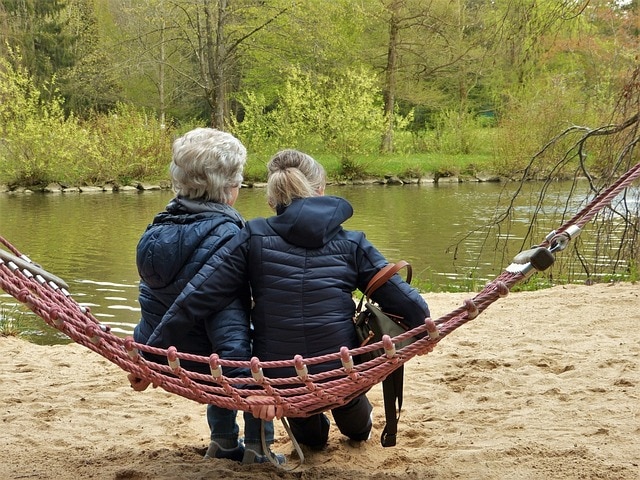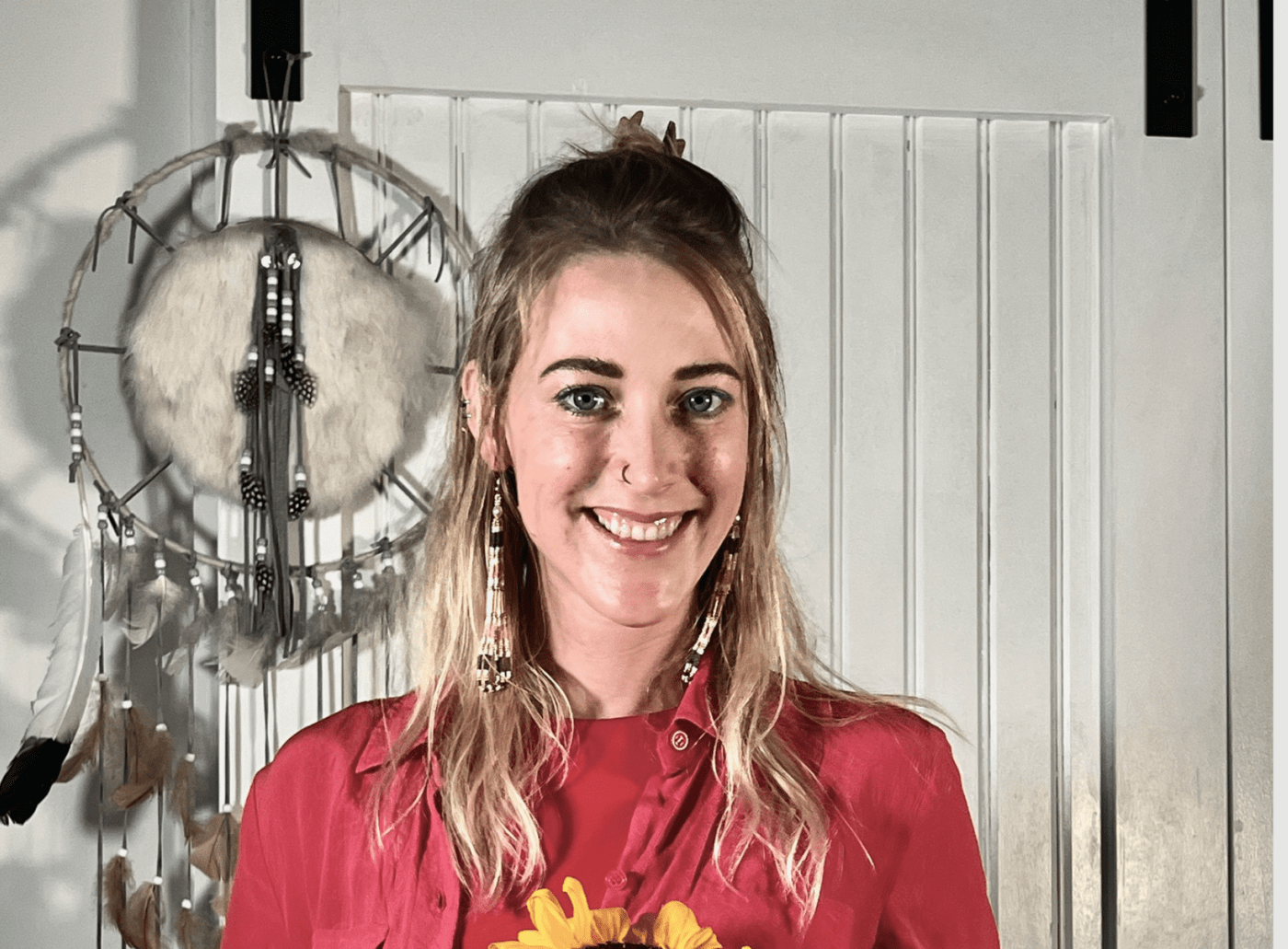Best Menopause Supplements, Herbs and Vitamins
The Westward Transition.
If you’ve read the other menopause articles, you know that my lense through which I view menopause is honoring a new life cycle, “the perimenopausal passage.. My intention is not to dampen the ebbs and flows and storms that get served for most who are in their perimenopausal transition but to balance those experiences with a broader viewpoint, it is your right of passage. From a Chinese Medicine perspective, women have seven-year cycles of life. And in this cycle, you are in your Metal season, direction westward. You are entering into your wise woman phase.
The season of Metal is the season of autumn, an enriched grieving moment to let go of what was and prepare to take with you only what is essential to nourish your spirit and body into the yin season of winter. Metal is not just a moment of proverbial dumping that which no longer serves, but a time of inspiration and deep connection to your spiritual practice. The direction of Metal is West in Chinese Medicine, a direction from which we seek wisdom, the direction the sun sets, the direction of the Chron. Chron is derived from the word, Corona, or crown. A crown of queendom, of wisdom, of intuition, a crown to symbolize the work that you have done in the earlier years. A crown that says, I own who I am, and I carry my story with grace in order to help others down their path.
With all that being said, there are a ton of supplements and practices to make this transition easier. Perimenopause is not meant to be a painful transition. Though with every season of growth, there will be pain of letting go. Letting go of fertility, nourishing children (whether they are your literal children or you can compare children of your fertile life as your career and passions that you birthed), and the symptoms are so troublesome. This article walks you through my favorite supplements, herbs, and nutrients to help ease the symptoms of menopause so you can have space to do the deeper work of moving into your Metal season of life.
Menopause experiences are varied and individualized and are often precipitated by a healing crisis related to perimenopause. Menopause, defined, is when a woman’s menstrual period has been absent for an entire year, whereas perimenopause is the time leading up to menopause. The pause that perimenopause is known to cause is where healing can be harvested. The average age of crossing from perimenopause to menopause is age 51. Early menopause occurs when a woman has her last period before age 45. You can read about early menopause here. Some women simply stop bleeding and that is it. Others have symptoms roar and an entire new depth of healing is to be had and/or explored.
What is going on beneath the surface during perimenopause?
Physiologically, the pituitary, one of the mother hormonal glands in the brain, begins to signal to the ovaries to slow down the production of estrogen. The stories that we hear about- perimenopausal “surges” are due to communication loops between ovaries and the brain. As the ovarian reserve begins to decline, the granulosa cells have less estrogen to produce. As estrogen levels decline in the body, the pituitary begins to scream to the ovaries to wake the eff up. A sudden surge of estrogen may appear and then decline and appear again, which can cause an array of symptoms. Many of these symptoms are unpredictable, and seemingly random and make it very difficult to track. Though, I must say that if you are a tracker, then there are apps such as the Lilly app that can provide some clarity in a time of confusion.
Estrogen is the hormone that gives us women our juiciness. Estrogen is responsible for healthy supple tissue; soft skin, supple vaginal tissue, cervical mucus, healthy brain function, and healthy laxacity muscles and ligaments. Without estrogen, we can dry up. Estrogen is one reason why women are often naturally more flexible than men. When the pituitary ovarian connection results in a decline of estrogen, perimenopause enters. Though many symptoms point to an estrogen connection, it is important to scan for whole health. Often, I see many women that have imbalanced cortisol, emotional health issues, thyroiditis, low progesterone, and stealth infections that are magnified by perimenopause.
The pause I witness in perimenopause is generally from the following symptoms:
- Lack of sleep,
- Hotflashes,
- Painful sex,
- Brainfog,
- Migraines,
- Fatigue
- And so much more!
It is important to remember that our endocrine system (hormones) is a complex symphony of over 200 hormones. And if one is off-key, it can throw the entire song out of tune. For instance, I often see hot flashes associated with stress levels, which is a cortisol connection. Also, it is important to ensure that the Thyroid gland and other endocrine organs are assessed during this time. The Parathyroid is responsible for healthy bone density along with Vitamin D (a hormone) and Vitamin K2. These are a few of many components to consider during your healing journey of the perimenopausal passage.
Again, In the perimenopausal years, women walk through a rite of passage. There is freedom to find as monthly cycles come to an end. Any cycling woman knows how dramatically different you feel day to day according to your hormonal cycle (and moon cycle). When that ends, you have a chance to open into a wise woman role. This does not diminish the perimenopause experience that I witness in my clients. Each womxn has a unique experience of symptoms and emotional growth. To read about one of my patient’s Perimenopausal Reflections, click here.
Symptoms of perimenopause are simply your body yelling for you to slow down and care for yourself during this time. Each pain and ailment is a signal to heal. As much as they can wreak havoc on your daily life and relationships, there are many different nutritional supplements and botanical medicines that can be your best ally. These tools relieve symptoms for you to get through the day-to-day life and for you to turn inward and ask yourself, “Okay, what is next to focus on in my healing journey?” It’s not easy to pause this day and age, so let’s get to some remedies!
Q. Often in allopathic medicine, more extreme solutions are advised such as hysterectomies and heavy hormone replacements. What are some lifestyle or naturopathic alternatives to support this transitional time?
Unfortunately, I often see women after they have already had a procedure. The most common procedure I see in standard american medicine is an ablation, which is a surgical procedure that destroys the lining of the uterus to stop periods. I have seen hysterectomies decline the past 5 years. Another common option is that women are told to begin (or continue) is hormonal contraception (birth control) in order to control their bleeding. A birth control period is not a true period. Hormonal Contraception decreases the amount of progesterone in your body, which is a protective hormone and often helps decrease symptoms of perimenopause. Many naturopathic and functional medicine doctors use bioidentical progesterone to treat perimenopausal symptoms.
Bioidentical Progesterone reduces heavy bleeding, eliminates hot flashes, and improves sleep. The Pfizer manufactured drug used to treat hot flashes, Duavee, increases the risk of endometrial cancer.
Herbal Remedies
- HPA axis balancing herbs focus on cortisol and stress responses and are key during the menopausal transition. A few of my favorites are Tulsi, Motherwort, Milky Oats, and Rose.
- Sage, Rose, and Milky Oats is my magical blend for hot flashes.
- Black Cohosh, Vitex, Maca and Red Clover along with liver cleansing herbs are essential to balance Estrogen and Progesterone. Each of these herbs support healthy hormone levels from your brain to your ovaries.
Research is often conducted on these herbs, but not funded because there is not a fiscal value to discovering medicines that grow in your backyard. Medicines from the earth are often difficult to patent in order to reserve Indigenous rights, our original medicine people. A few notable studies include Black Cohosh. Black Cohosh has been found to be as effective at relieving perimenopausal symptoms as Hormone Replacement Therapy. One study of 60 menopausal women showed Black Cohosh improved psychological symptoms. significantly. 1 Another study of 60 menopausal women showed Black Cohosh to relieve symptoms within 4 weeks, and cause no side effects.2 Both of these controlled, clinical trials showed Black Cohosh to be as effective as pharmaceutical Estrogen. Other clinical investigations have shown Black Cohosh to be useful in controlling symptoms while weaning from H.R.T. and in reducing menopausal symptoms following ovarian surgery.
Preserving Vitality + Pleasure / Sex
This is one of the most important pieces as you make the perimenopause transition. To preserve vitality is not limited to simply your body, but also your emotional and spiritual health.
First, the cortisol, or stress hormone connection is meant to be addressed with perimenopause. These transitions require extra care for our body. Adaptogens are herbs that can help regulate cortisol and mood.
Tulsi is one of my all time favorites for helping you modulate stress anxiety and blood sugar.
Motherwort is great for anxiety, as is passionflower, hops (bonus: they are estrogen rich), ashwagandha, rose, lavender, and california poppy.
Sexual Health:
To maintain vaginal health is to maintain sexual health. This can take a number of remedies, but first and foremost, more sex and masturbation are recommended in order to keep maintaining the tissues.
Vaginal Care
Vaginal steams, suppositories, lube and more lube. One of the most devastating parts of moving into menopause is that you can finally have sex without the worry of an unplanned pregnancy, yet your vaginal tissue thins and your cervical mucous lessens, so sex is just not as enjoyable. Also, because the tissues are thinner, the friction can cause bacteria to adhere to vaginal walls and make you more susceptible to urinary tract infections. Vaginal steaming is an old practice that helps bring blood flow to deliver healing cells to your lady bits. Also, the aromatics released from herbs deliver medicine directly to your tissues. My favorite suppositories for lubrication are Bezwecken DHEA suppositories. These soothing cocoa butter-based inserts not only help tissue moisture but also assist your adrenal glands in testosterone and cortisol production. I often recommend CBD-based lubricants to my clients, as CBD is well-researched to amplify orgasms. The O-shot is a recent procedure developed by the same Doctor that founded the Vampire Facial. Platelet Rich Plasma (PRP) helps regenerate tissues when injected into joints or other areas of the body. With the O-shot, PRP is injected into the G-Spot and has been one of the most profound treatments I have witnessed for incontinence and orgasms. The more that you have sex, the more tissue turnover in your vaginal canal, therefore you will enjoy sex more because your vaginal wall is not too thin or dry to take penetration. If you are partnered with a woman, be sure to use toys that are penetrative with lubricant to preserve your precious vagina.
- Suppositories, such as DHEA-S, vitamin E, cocoa butter, and Hyaluronic Acid help maintain lubrication and can be used as an adjunct lube during sex or masturbation. I personally love my in-house made herbal suppositories for this!
- Regular steaming helps maintain vaginal pH, ward off infections, and vaginal suppleness. I love basil, calendula, rose, yarrow, cedar, mullein, and ginger for herbs to steam with.
- Shockwave therapy/Ultrasound therapies are also available such as Femmewave. On the topic of more procedural therapies, the O-shot is another great option.
- O-Shot, PRP injections are profound.
- Probiotics: Having Femme-specific probiotics is key with vaginal dryness in order to prevent infections. You are more susceptible to UTIs and yeast infections during this period of time because as your vaginal tissues dry, they are more easily abraised and can contract infections.
Estrogen-Preserving Herbs:
Black Cohosh is most commonly used in menopause management formulas.
Alfalfa is both estrogenic and nutrient rich in tincture form, which can help maintain bone health.
Blue Cohosh is a bit more of a mild estrogen-rich herb
Licorice also has estrogenic properties and is great if you are experiencing total burnout and or are suspicious of viral infections. *Please avoid licorice if you have hypertension.
Flax seeds can be used as food and medicine and can help stimulate estrogen.
Hot Flashes
The magic combination for hot flashes are sage and rose together. They are both cooling aromatics and can help on the spot. Hot Flashes are correlated with estrogen and cortisol, so both stress and declining estrogen levels are meant to be addressed while managing hot flashes.
Sleep
Sleep becomes elusive as we age. If night sweats are your ailments, I suggest keeping a sage and rose tincture and a lovely fan. Bamboo sheets may become your favorite linens. And if hot flashes are interfering, try my combination of sage and rose, for insta-cooling.
Supplements:
- Melatonin, though If you are a heavy dreamer, I do not recommend melatonin, as it can exacerbate dreams.
- My sleep blend of Kava, Lavender, Rose, Valerian, Poppy, and Passionflower seems to work great. Kava delivers immediate relaxation, whereas the others help you stay asleep.
- Bioidentical Progesterone delivers the benefits of a less harmful hormone replacement therapy that can help modulate inflammation, sleep, and the not-so-fun symptoms of perimenopause.
Sleep hygiene is most important during this transition. Be sure to eat three hours before your bedtime, avoid screen time for an hour before bedtime, and use lamps with warmer lighting rather than overhead lights. Silk eye masks help your melatonin peak at the time it needs to for proper sleep and block out the light. Try to get to sleep by 10p, and stop screen time by 8p, as blue light interferes with melatonin, the sleep hormone. If you are having issues falling asleep, get up, listen to an audiobook, and try again.
Waking first thing in the morning and stepping outside is the best way to reset your sleep cycle. If the weather isn’t ideal, you can use a window for natural light exposure.
Some of my favorite books to lull you to sleep are the Wise Woman Series by Clarissa de Pinkola Estes. She could read you a refrigerator manual and you would love her soothing voice.
Food AND Exercise
Eating healthy decreases inflammation. Ensure you are consuming healthy food daily, which means organic when possible, plant-based and whole foods. Half of your plate should be vegetables. The rest is protein and starch. I have seen symptoms decrease with a simple shift to an anti-inflammatory diet. Depending on your food intolerances, this could mean cutting dairy, gluten, eggs, and or pork out of your kitchen. Remove those along with sugar and refined carbohydrates for three weeks and introduce one food off of that list a week. Take note. Read here to learn more about the menopause diet.
The best exercise? The one you enjoy! Bone density-building exercises include weight lifting, HIIT (limit to 2x per week), and pilates.
If you or someone you know is struggling with this transition, I assure you it is the best worst gift ever! The healing that can be harvested during this time can go as deep as you are ready. To read more about menopausal symptoms, click here. Finding a holistic practitioner who can order hormone tests, prescribe progesterone (and estrogen if necessary), and nutritional guidance is key. What are your experiences? What lessons have you harvested as you move through this passage?



